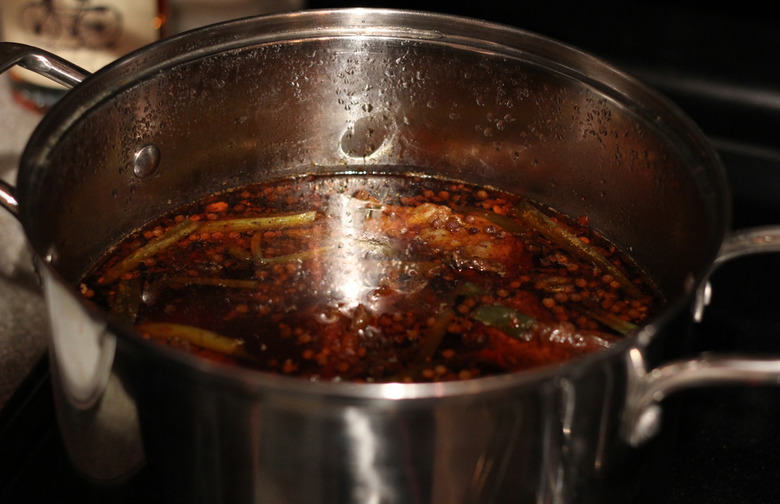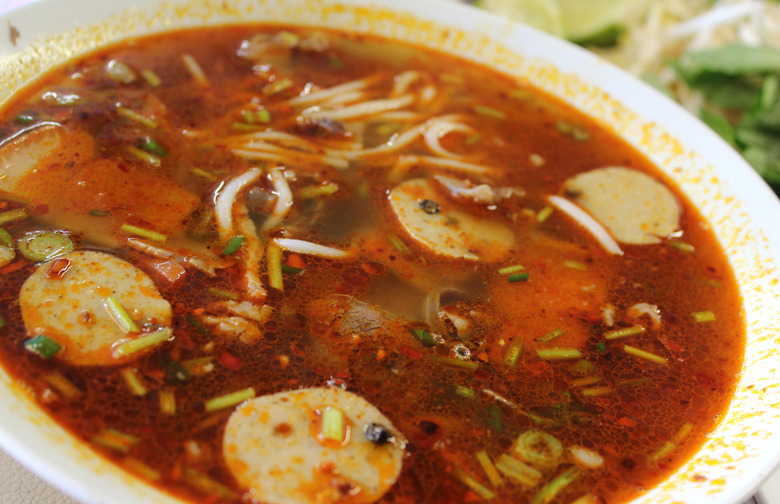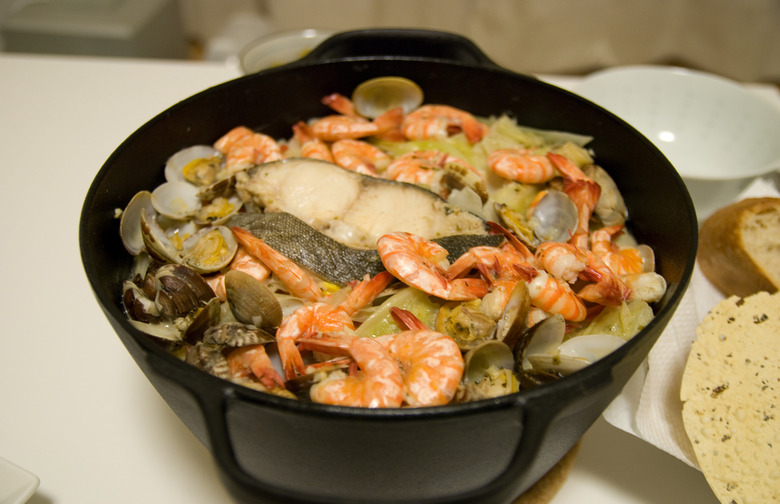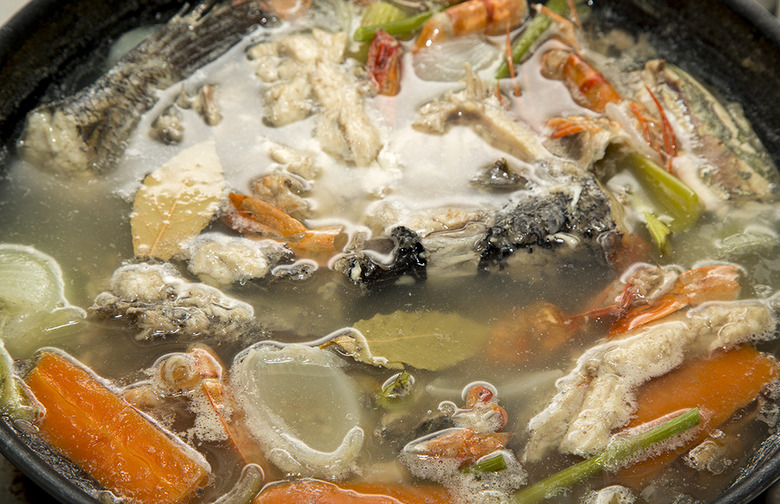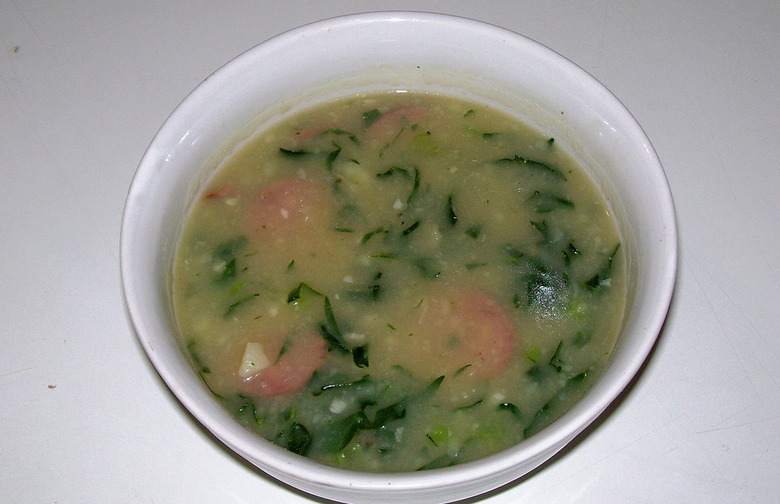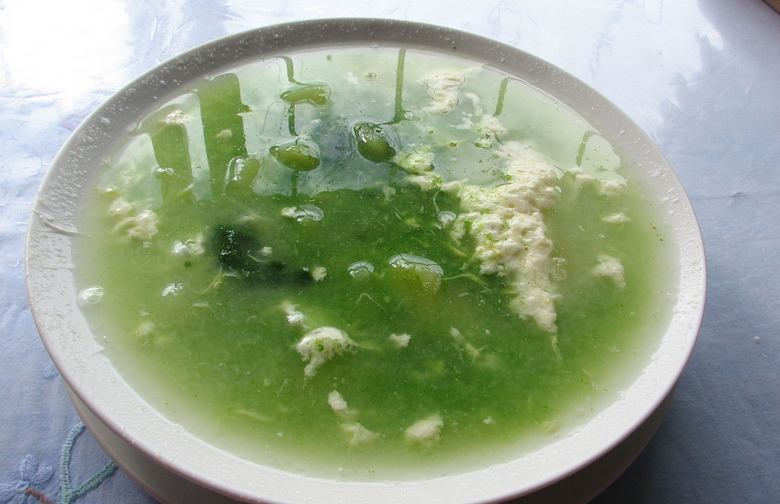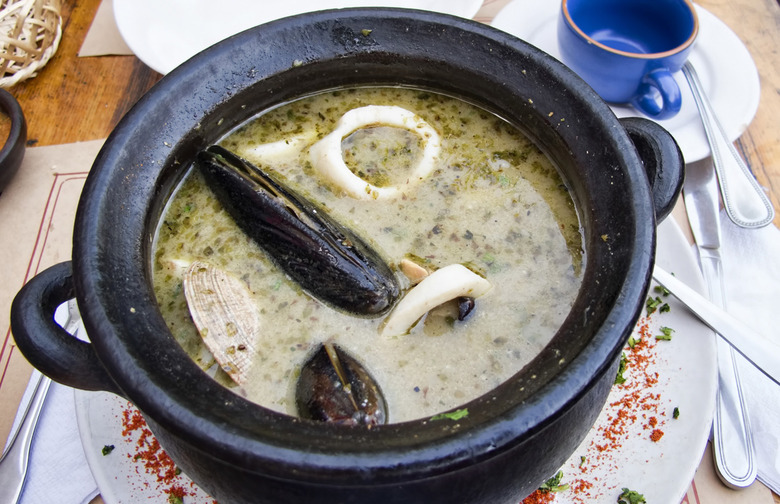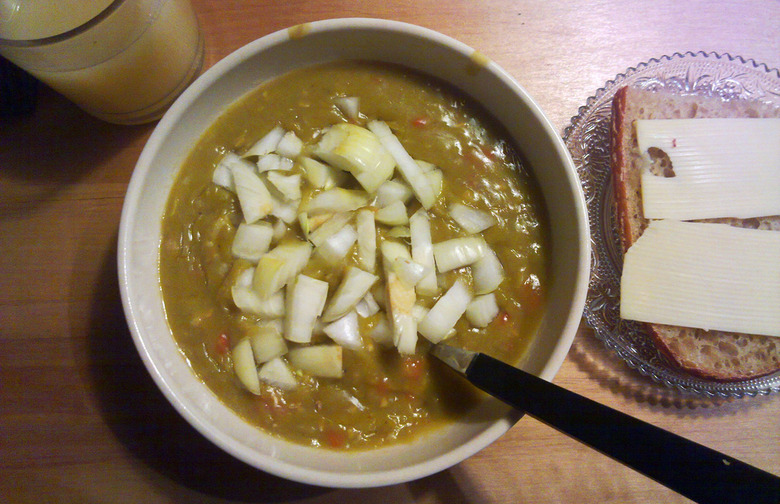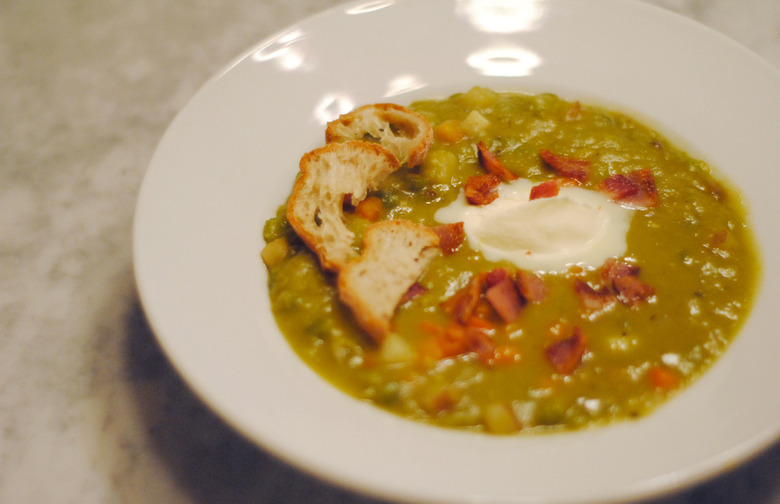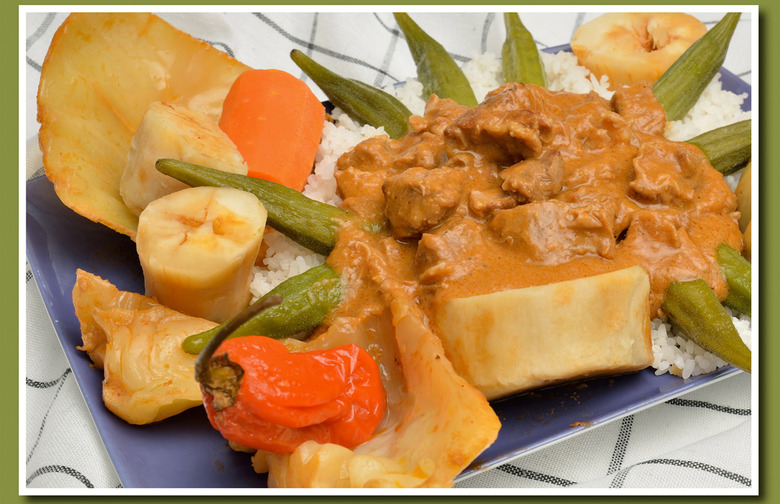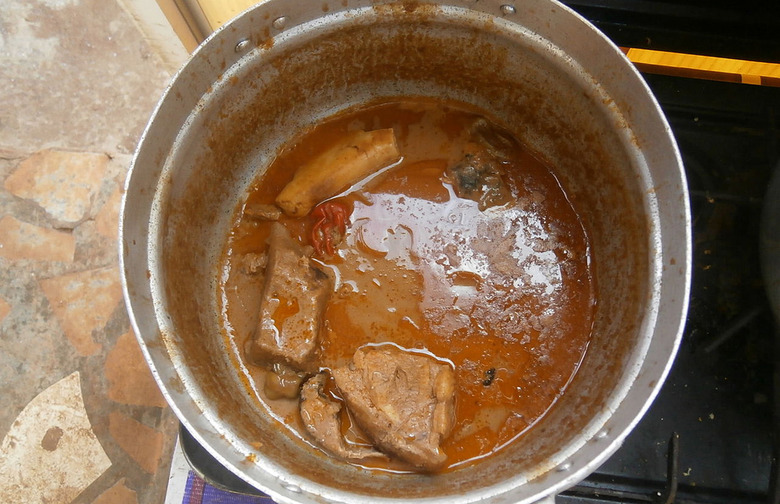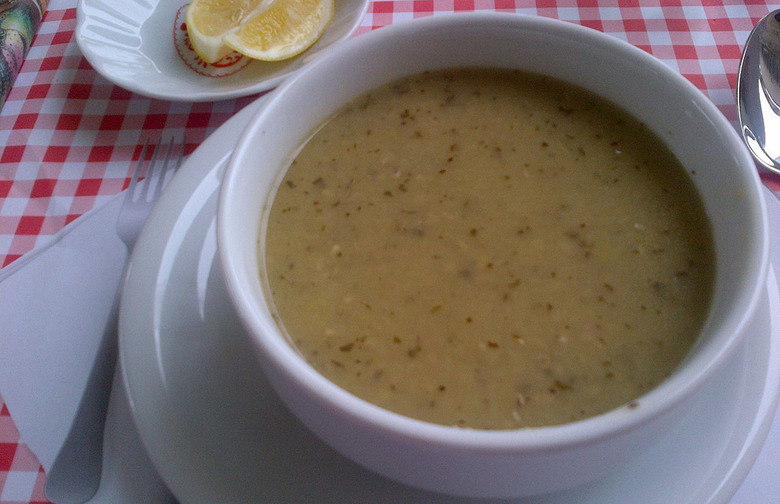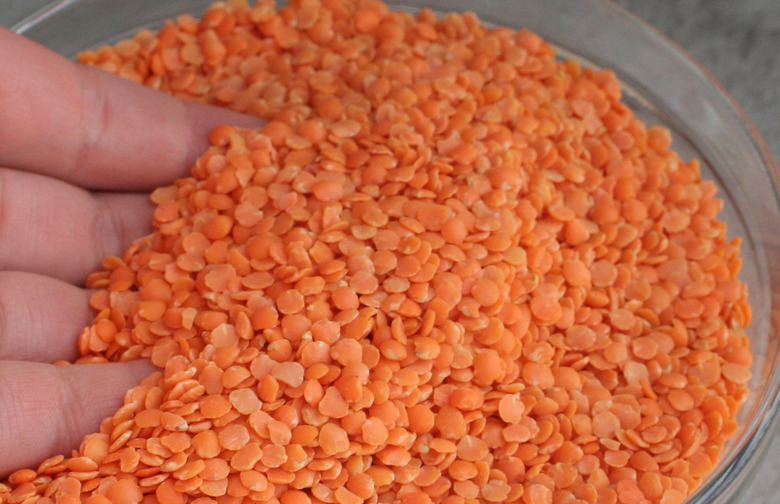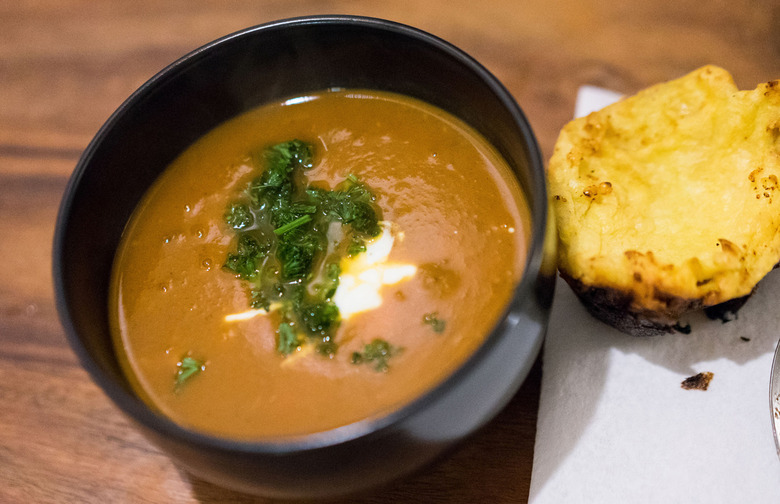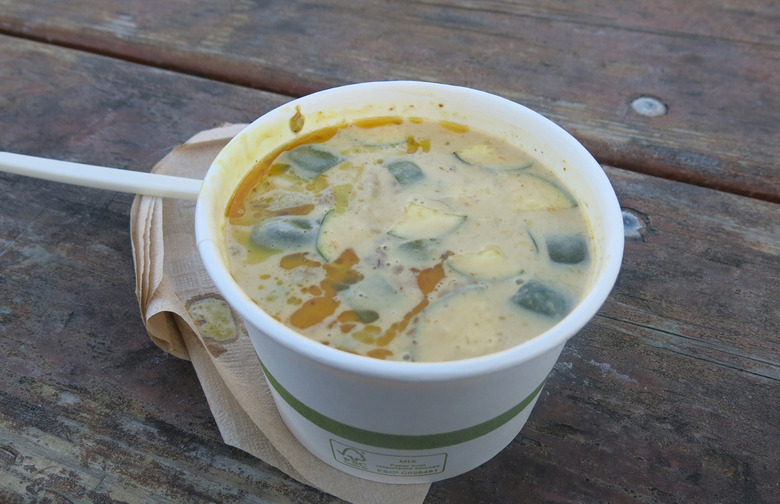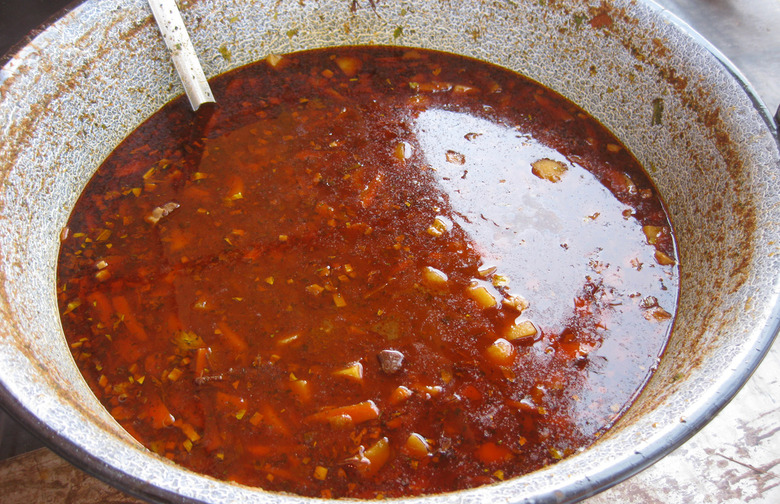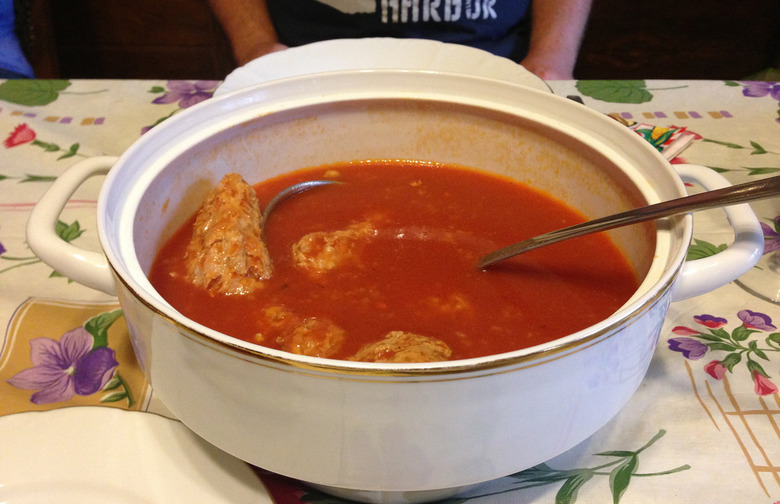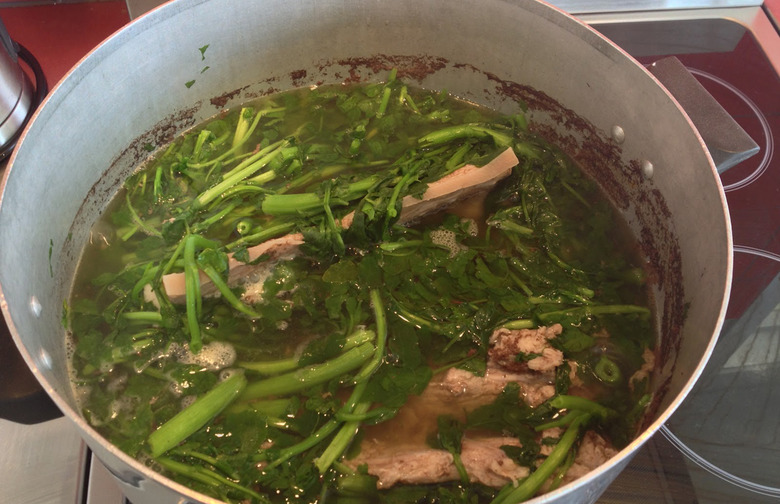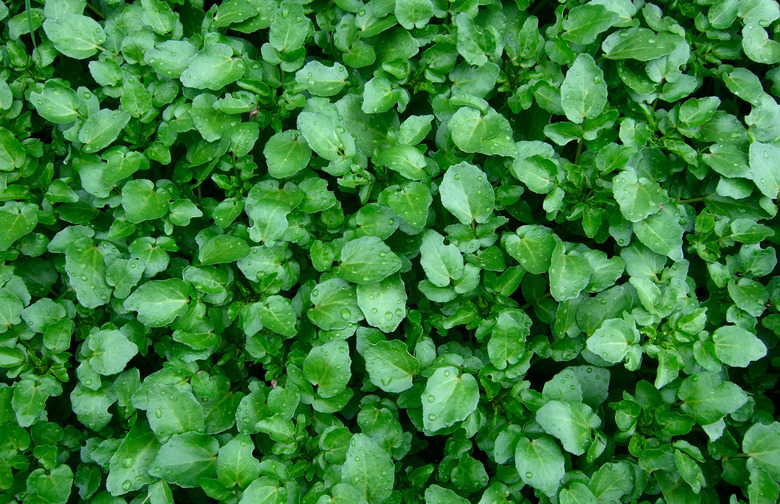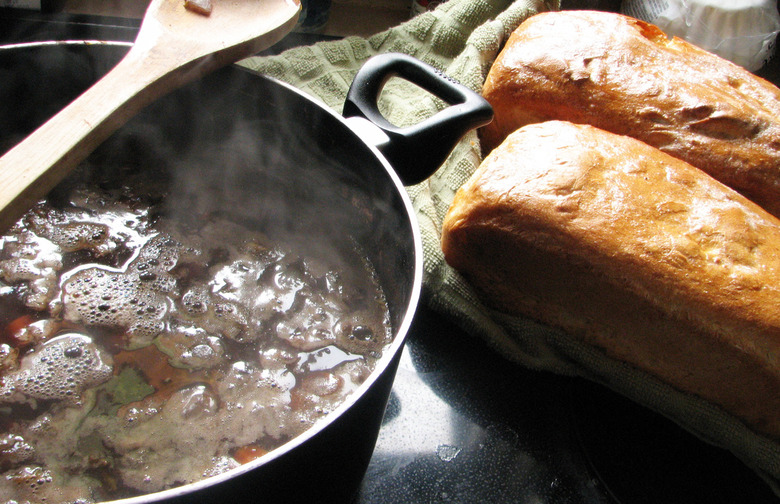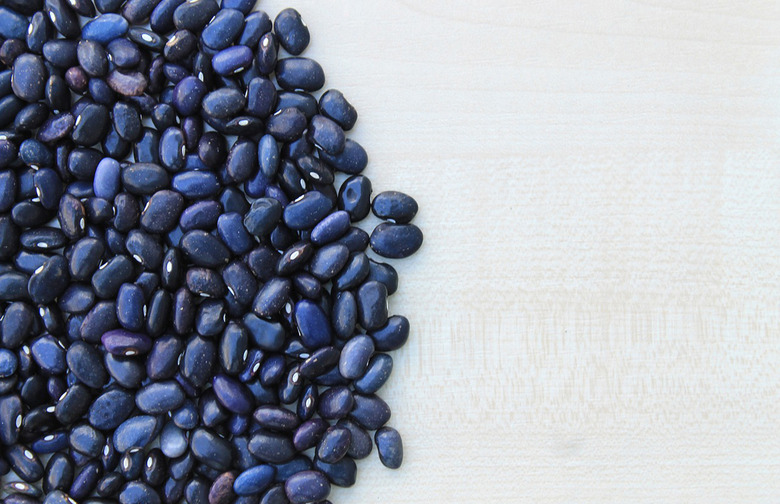12 Stops For Soup Around The World Slideshow
Easy to digest, and considered a powerful natural remedy, soup has been recommended as far back as anyone can remember by everyone from ancient Romans to modern-day doctors to Jewish grandmothers for its healing powers. In fact, according to archaeologist John Speth, an emeritus professor of anthropology at the University of Michigan in Ann Arbor, "it's very likely that humans were concocting soup at least 25,000 years ago in some places."
Whether it's a simple broth, haute cuisine consommé, cold gazpacho, or hearty goulash, soup is an essential dish and it can be an easy way to learn about a new country and cuisine. You don't need to pack a bag for this culinary journey — just visit our 12 stops around the world in soup.
Aush (Afghanistan)
Americans have few chances to put a human face to the country of Afghanistan and the cuisine is a wonderful way to learn about the people of this ancient country. Afghan cuisine is a mélange of influences from Central Asia, Asia Minor, Persia, India, and the Middle East, yet none of these culinary traditions dominate Afghan cooking. Made differently from one household to the next, aush, a noodle soup, is typical of the fusion found in Afghan cuisine.
Aush (Afghanistan)
Sherwas, or soups, have long been popular one-dish meals. There are dozens of aush recipes with variations on the meat used or the seasonings, but this soup is traditionally made using long flat noodles, mini ground beef meatballs, onions, garlic, coriander, chickpeas, kidney beans, potatoes, and fresh parsley, dill, and mint. Topped with chakkah, or strained yogurt, and served with naan, this is a perfect cold weather soup.
Bouillabaisse (France)
For lovers of seafood and soup, bouillabaisse, whose name comes from the old Occitan words for boiling and reducing, is probably the most famous soup of Provence. Originally from the ancient port city of Marseille, this seafood soup was traditionally made with typical Mediterranean fish like bony rockfish and mussels and crabs considered less desirable in the fish market. Always thrifty, the fishermen made do by cooking their less desirable catch with other ingredients they had on hand, and served it with a fresh baguette and a glass of local wine. Now that's a meal fit for a ship's captain; and it only cost a few sous.
Bouillabaisse (France)
While bouillabaisse may have had humble origins, over the years it has become a more refined dish served at even the fanciest restaurants. Over time, the recipe switched to more desirable fish and seafood and now often includes not only the rascasse (scorpionfish) deemed to be essential, but also John Dory, snapper, shrimp, clams, langoustines, and more — even lobster sometimes. Fresh seasonal vegetables are combined with tomatoes, onions, garlic, leeks, saffron, fennel, and bay leaves. Served in a bowl with baguette toasts and a spicy red pepper mayonnaise called rouile, this is Provence in a bowl. (In some presentations, the fish is removed from the soup and served separately, with the broth becoming a first course.)
Caldo Verde (Portugal)
For a small country, Portugal is packed with an amazing variety of regional foods; its Mediterranean style cuisine is a mix of Asian, African, and Old World classics. The Portuguese love soups and stews and eat them most every day made with vegetables, fish, beef, chicken, pork, goat, and starches. Caldo verde,literally "green broth," which is considered Portugal's national dish, is a rustic soup that is like liquid gold because it costs little to make, is packed with nutrients and flavor, and the ingredients lend themselves easily to substitution with whatever greens are on hand.
Caldo Verde (Portugal)
Caldo verde hails from the Minho region of Portugal. It's a puréed soup made with kale or collards thickened with potato and flavored with pieces of chouriço or linguiça sausage. Portuguese cooks often let the soup chill overnight to intensify the flavors and then reheat and serve it the next day with bread.
Caldillo de Congrio (Chile)
Chile is a magical place of fire and ice, where poets are revered and the food is part Amerindian, part relics of Conquistadores and Catalan influences, and part trace elements from German immigrants. The cold, pristine Pacific waters that line Chile's coastline make seafood and seafood soups essential parts of the cuisine. Plus, Chile is the only country where one of the world's most important Nobel Laureate poets, Pablo Neruda, used meter to scribe a delicious recipe for this soup, made with conger eel.
Cadillo de Congrio (Chile)
Pablo Neruda's "Ode to Conger Chowder" captured the essence of the Chilean spirit, the incredible quality of its seafood, and gave lovers of seafood and literature a fantastic recipe for conger eel chowder that infused garlic, onion, prawns, and a light broth with the tang of the sea.
Fassolatha (Greece)
In ancient Greece, the culinary arts were dictated by four tenets that are still the essence of Greek cooking today: simplicity, freshness, unpretentiousness, and variety. Food is always a family affair. Despite the country's gorgeous views and landscapes, fertile soil is hard to come by in Greece. Cooks have always been creative with the limited resources and relied on soups to offer a punch of flavor and healthy ingredients that go a long way to feed a family. The region of Macedonia is considered Greece's garden and it produces ripe vegetables that show up in a range of popular soups, but dried beans and other legumes are as ancient as the Greeks.
Fassolatha (Greece)
Considered Greece's national dish, fassolatha, is an ancient soup made with plenty of olive oil and white beans; most days you can find it being served everywhere across the islands. It's popular during Lent, and is simply made with carrots, onions, celery, bay leaf, and tomatoes, It is traditionally served with rustic bread, kalamata olives, and feta cheese.
Hernekeitto (Finland)
For those lucky enough to visit Finland, one thing you can count on every Thursday is hernekeitto, pea soup, served with thin pancakes and cloudberry jam. More than one quarter of Finland lies above the Arctic Circle and hearty, filling, nutritious foods that are easy to make are a must. Throw in a long history of religious fasting traditions on Fridays and you have an inexpensive but approved way to tide you over until Saturday.
Hernekeitto (Finland)
Fast-forward to today and pea soup is served for lunch at home and in restaurants across Finland, but especially in schools and universities. Cooked with dried green peas, a bit of ham or pork, onion, and mustard, it's easy to understand why this thick, filling soup is a favorite in cold climate.
Maafe (Mali)
If you want to know more about the people of Mali, listen to their infectious music — and try some of their popular dishes, like the porridge-style soup called maafe. The peanut is a subsistence food in Mali and other parts of West Africa and it is eaten raw, the oil is used for cooking, and it is roasted and served in a variety of recipes, including soup. Millet and cornmeal are staples in the diet and together with the peanut are pillars of the cuisine that are often cooked together or as side dishes.
Maafe (Mali)
Maafe is a dish of the Bambara people of Mali, experts at surviving the severe droughts and rainy seasons that make farming difficult and starvation a very real threat. Maafe is a lifesaver because it can change out ingredients to fit what's available and is often prepared chicken or lamb along with cabbage, acorn squash, tomatoes, onions, garlic, cayenne, and peanut butter. Satisfying and sustaining it is often served with white rice or couscous is a welcome dish during leaner times.
Mercimek Çorbayı (Turkey)
2016 is the UN's International Year of Pulses, but Turkey was onto this pulse long before the twenty-first century. In Turkey, one of the oldest and most popular soups is mercimek çorbayı, red lentil soup, which is deceptively simple but rich with flavor. One of the three so-called royal cuisines, the fare of Turkey is one of the most complex, varied, and versatile anywhere. The Ottoman Empire dominated the Old World's geography for more than 600 years and its food reflects the agricultural range of the empire's breadth.
Mercimek Çorbayı (Turkey)
Traditionally served as a starter at evening meals during the Muslim month of Ramadan (when eating in the daylight hours is forbidden), this dish used to slowly cook for hours into order to create the smooth purée-like texture. Modern recipes are faster and easier thanks to blenders. This dish is now made with red lentils, potatoes, tomato paste, paprika, and mint and is served with bread and lemon.
Mulligatawny (The United Kingdom)
India is an ancient culture with a hugely diverse regional cuisine that has been influenced by cuisines and cultures from the Far East, Persia, the Moguls, and invaders as far away as Britain. In fact, British influences on Indian food and vice versa are now part of the culinary vernacular of both countries. A case in point is the famous soup called mulligatawny, whose origins may be discerned in southern India. During the colonial era, British expats combined English soup traditions with the local Indian curry flavors, added local vegetables and transplants, and let things simmer.
Mulligatawny (The United Kingdom)
Over time, mulligatawny became a rich, curry soup made with chicken, lamb, or vegetable stock; contained chicken, onion, celery, apples, and almonds; and was thickened with cream or coconut milk. Served with rice and seasoned with curry, this is popular dish in England and Australia that includes vegetarian versions, but Australians often add tomatoes and bacon.
Paprikás Csirkleves (Hungary)
Goulash may be Hungary's most famous dish, but this specialty is just one of the many stews, soups, and ragouts that dominate the cuisine. Hungarians adore soup, and it is served as a first course with lunch and dinner as a matter of tradition. There are hundreds of recipes for soup that make the most of the country's superb Mangalitsa pork, fresh water fish, poultry, vegetables, and game. And for tummy-filling richness, few can compete with hearty paprikás csirkleves, or chicken paprikash soup.
Paprikás Csirkleves (Hungary)
Hungarian paprika is renowned for its quality and deep accents; it is the single most important staple in the Hungarian larder. This species of Capsicum annuum species is renowned for its fragrance. Its development played a role in Albert Szent-Györgi winning the Nobel Prize for Science in 1937. It imbues chicken paprikash soup with its distinct earthy, smoky notes, so this soup, which is prepared with chicken, onions, celery, and chicken broth, is bereft without it. Thickened with sour cream and served with Hungarian dumplings called nokedli, you won't walk away hungry with this as a starter.
Pork and Puha (New Zealand)
The indigenous Maori of New Zealand have an ancient past that disappears into the mists of time, but central to their culture is the respect of the land and sea and reverence for the food they can catch, hunt, fish, and grow. Communal living, cooking, and eating is a long tradition, and no culinary custom is as revered as boil-up. For centuries, these soups were made with locally sourced game, seafood, and vegetables; with arrival of Europeans, pork and other staples were added to make this "boil-up" a classic.
Pork and Puha (New Zealand)
Modern ingredients have been added to boil-ups, and one of the most popular boil-ups today is pork and puha. Essentially a soup, pork and puha is made with pork, pork stock, root vegetables such as kumara and potatoes, tomatoes, puha (watercress), and spinach, this soup helps warm the body and soul when cold Pacific waters and damp fog chill to the bone. To really make the meal stick to your bones, the Maori often serve this with dough boys, which are flour dumplings or rewena paraoa, a Maori potato bread.
Sopa de Frijoles Negros (Cuba)
Sopa de frijoles negros, black bean soup, is probably Cuba's most famous dish, and like the Mambo, it's a memorable blend of cultures, spices, and flavors. Cuba's culinary heritage is a combination of traditions and ingredients from Spain, products introduced by African slaves, the indigenous fare of the native Indian peoples of the Caribbean, and foods from the New World.
Sopa de Frijoles Negros (Cuba)
This hearty blend of black beans, onions, pork, and tomatoes is seasoned with spices and herbs that are the heart of Cuban cuisine. Cumin, oregano, bay leaves, garlic, and cilantro are like the intricate, sexy steps of the Mambo and this soup is best served topped with chopped raw white onions, a bit of extra-virgin olive oil, and a splash of red wine vinegar.

